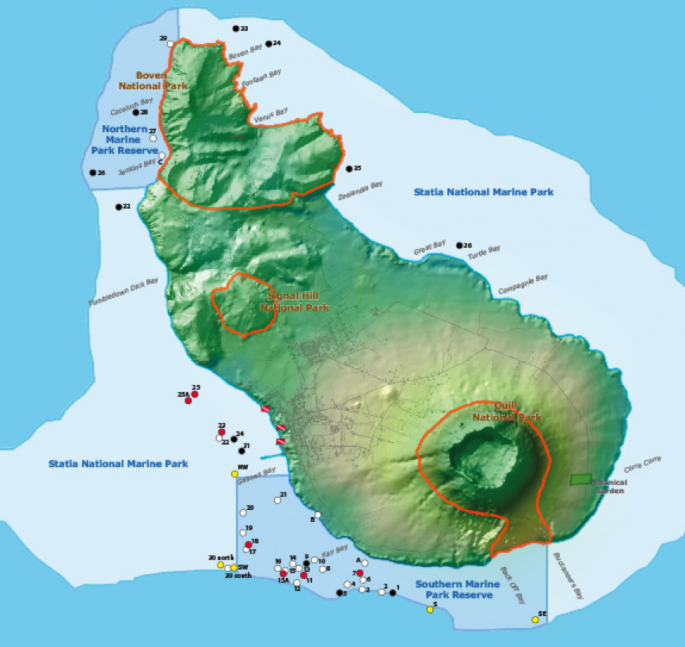New Red-billed Tropicbird data suggested declining nest survival rates may be more related to parental behavior than previously thought. A researcher from Utrecht University, along with STENAPA and CNSI staff analyzed nest characteristics, trap camera photos and historical data to better understand the driving factors to declining nest survival rates.
Seabird populations are facing unprecedented levels of threats which has resulted in nearly 70% loss of monitored seabird populations over the past fifty years. This is faster than any other group of birds worldwide and can be linked to over-fishing, habitat destruction, invasive species, increased storm events and changes in food availability.
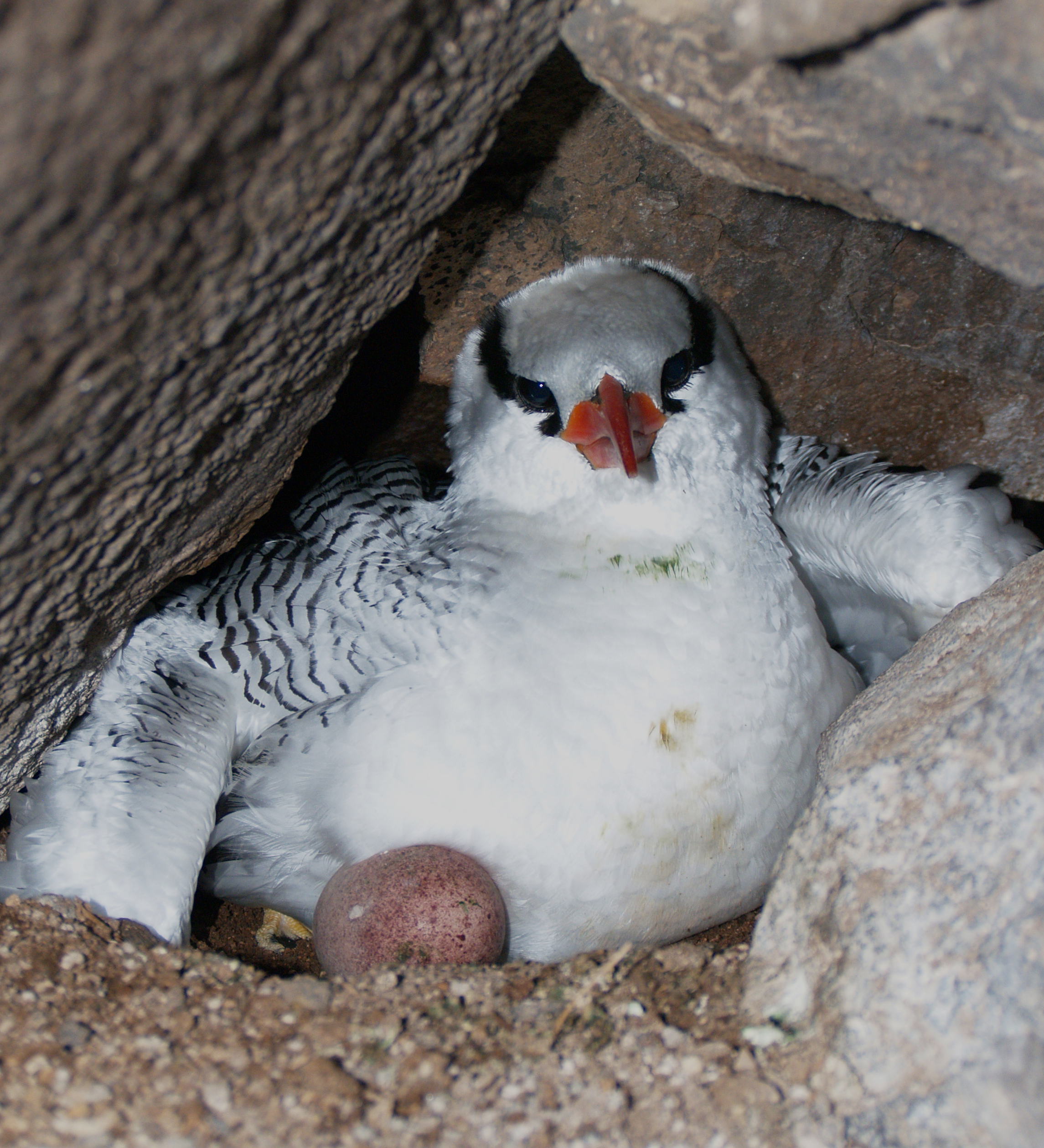
Pilot Hill
The Red-billed Tropicbird are an iconic species for the northern Dutch Caribbean islands. In fact, a small but globally significant colony of breeding pairs nests within the Boven Important Bird Areas of Sint Eustatius. Unfortunately, this area has been experiencing high rates of nest failure over the past decade. New research, conducted by Utrecht University student Hailley Danielson-Owczynsky, analyzed a combination of previously collected information with new monitoring data from the Pilot Hill nesting area in an attempt to better understand what is causing these low success rates.
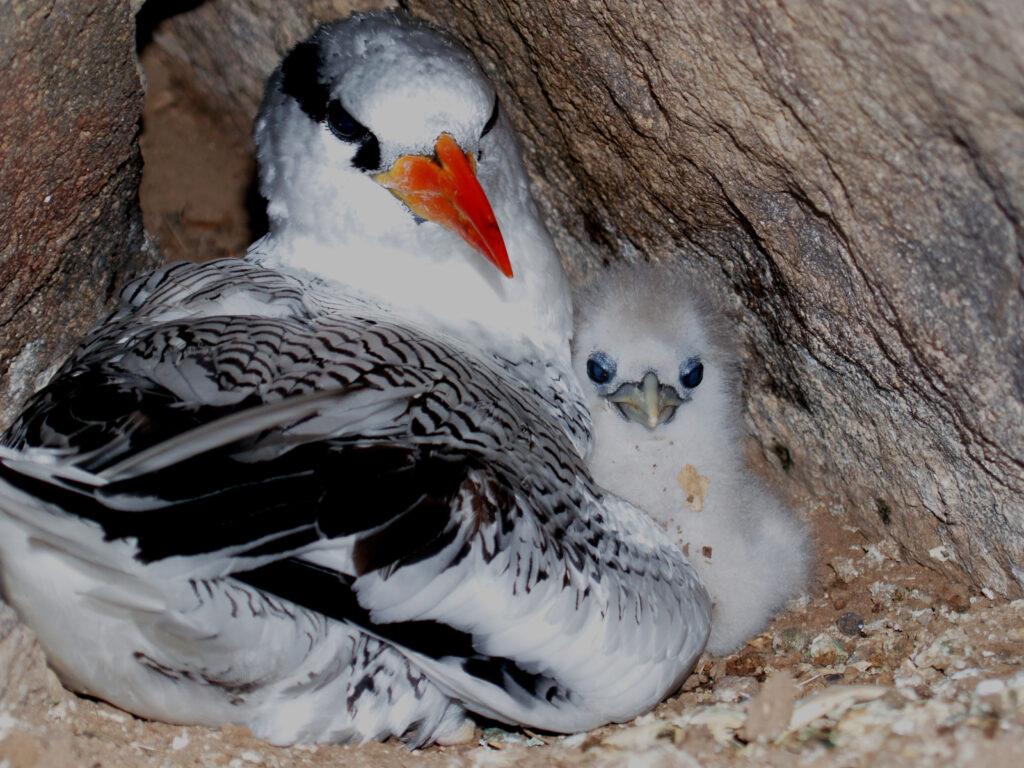
Nest Monitoring
Previously, high predation by cats, rats and crabs were blamed for declining egg survival rates. This was partially linked to the success of predator control projects on Saba, where nest survival of one site was improved from 0 to 40% after two-seasons of cat removal. Additionally, when reviewing the 1.6 million photos taken by nest cameras between 2017 and 2022, 80.5% of monitored nests showed predator presence, leading managers to blame predators for declining numbers. Further analysis conducted by Danielson-Owczynsky found that before being consumed by predators, many of the eggs had already been left unattended by parents for a prolonged period of time. This same study found that predators were much less likely to visit a nest when a parent was nearby. Therefore, egg failure is more likely attributed to parent behavior prior to its predation. It is important to note that invasive predators are still a concern, these results merely give an additional factor for conservation managers to consider.
Difficult foraging conditions for Tropicbird parents could lead to decreased nest attendance. Red-billed Tropicbird’s diet is comprised primarily of flying-fish; however, over-fishing has led to a decrease in overall fish populations requiring parents to forge over greater distances for longer periods of time.
Implications
Pelagic seabirds, such as the Red-billed Tropicbird possess many unique traits, such as long lifespans, slow development and low reproductive rates, often attributed to their limited and sporadic food supply. Given their long-life spans and the fact that they forage across wide ranges, these birds have been used as indicators for overall marine ecosystem health. Therefore, the rapid decline in local populations gives key insight and rising concern for overall marine environmental conditions. Understanding the magnitude of threats facing these and other related species will be key in safeguarding a strong and resilient marine environment moving forward.
Report your sightings
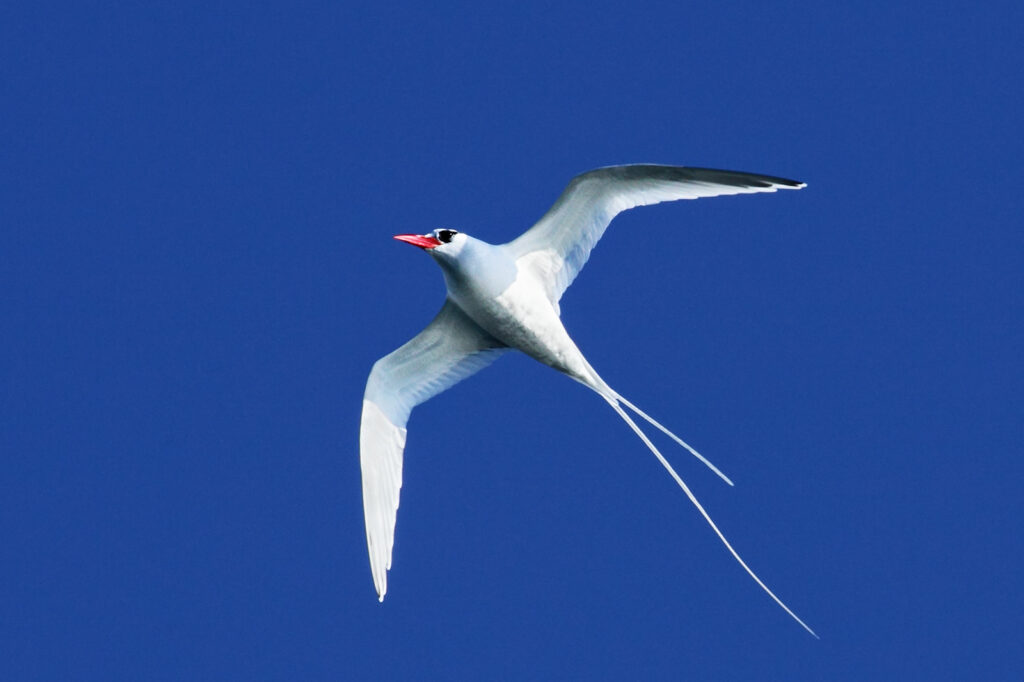
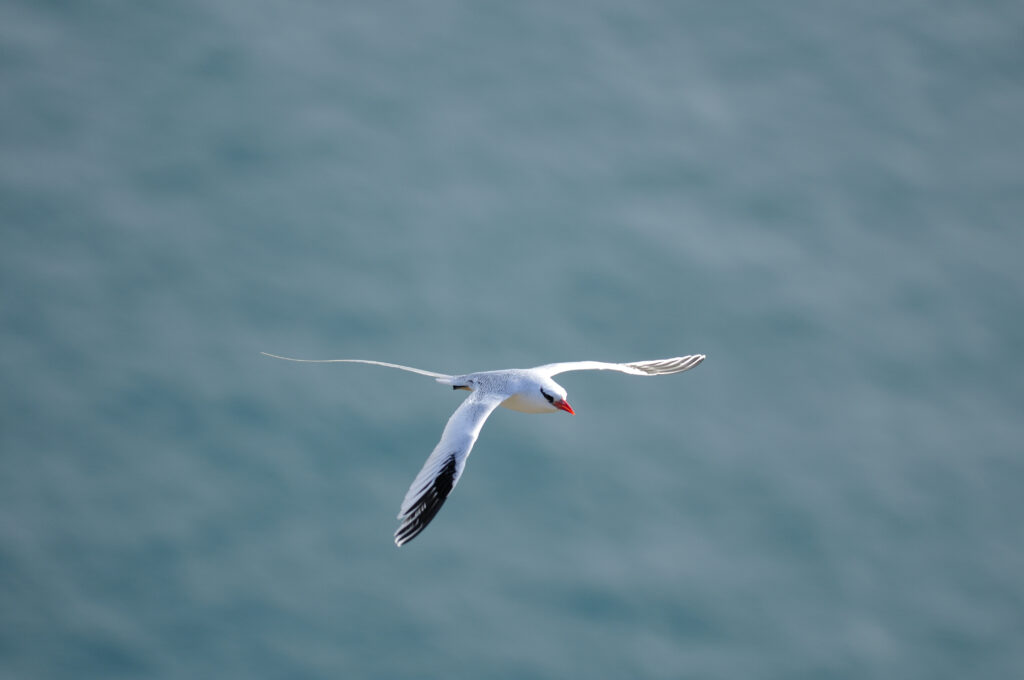
Species reports by local communities and tourists are invaluable for nature conservation efforts to help increase public awareness and overall species protection.
You can report your Red-billed Tropicbird sightings and photos on the website www.Observation.org or download the free apps (iPhone (iObs) & Android (ObsMapp)). You can also send your information to research@DCNAnature.org for support. An automatic species recognition tool is in development, so stay tuned for updates.
To learn more, you can find the full report by using the link below:
Danielson-Owczynsky, H. 2022. Factors that Influence Red-billed Tropicbird Survival on Pilot Hill, Sint Eustatius. Utrecht University Thesis.




